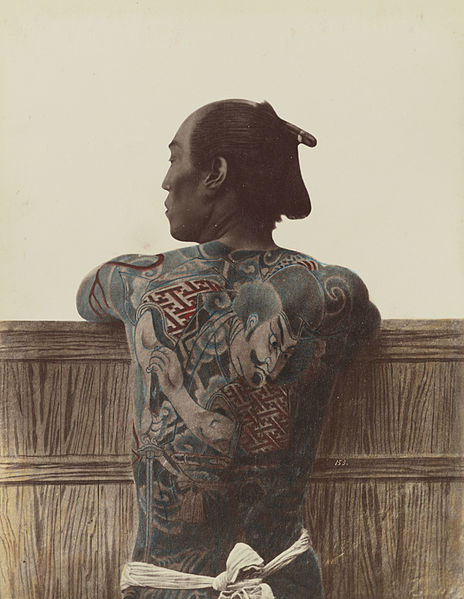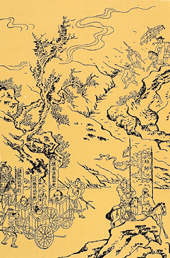
Irezumi: Traditional Japanese Tattoos
Once used for spiritual and decorative purposes, tattooing in Japan can be traced as far back as the Jōmon period or Japan’s paleolithic period (about 10,000 BCE). Tattoos in Japan have a checkered history being connected to criminals and the yakuza mafia. Inking was also prohibited by the Japanese government for a time, adding to the general negative perception in Japanese culture. Today, there are still some establishments with signs that say “No Tattoos”, such as public baths, fitness centers and hot springs that strictly do not allow tattooed clientele.
Japanese tattoos or irezumi (“inserting ink”), is the infusing of pigment into the skin to apply permanent patterns, images or symbols. Irezumi has its own distinctive style that developed over the centuries. Japanese tattooing is done by hand using metal needles that are attached using silk thread and wooden handles. The irezumi technique requires the use of a special ink called Nara ink or zumi. The Japanese body inking method is a time consuming and painful process.
Irezumi, Japanese man.
An iruzumi artist is called a Horishi, and there are very few who practice this nowadays. A Horishi have one or two apprentices who work and study the craft for a long period of time.
History of irezumi
The Ainu people are known to have tattoos for social and decorative purposes. During the Kofun period (300–600 AD), irezumi started to develop a negative reputation. Instead of tattoos being used for ritual or status purposes, tattoo markings were used on criminals as punishment.
The Edo period (1600–1868 CE) in Japan saw tattoos as having varying roles. Irezumi markings were still used as punishment for criminals, but it was also used for body decoration. It was during this period that irezumi developed into the advanced art form it is recognized to be today. What drove Japanese tattoos to develop further as an art was from woodblock printing and the release of the Chinese novel Suikoden, a tale of courage and bravery illustrated in lavish woodblock prints that depicted men in heroic scenes with their bodies decorated with mythical beasts, flowers and dragons.
Suikoden illustration.
Suikoden became an immediate success and the demand for similar tattoos as seen in the novel became popular at the time. Woodblock artists began tattooing using most of the same tools used for imprinting designs on wooden blocks such as gouges, chisels and most notable of all, a unique type of ink known as Nara ink, on human flesh. Nara ink or Nara black is known to turn blue-green under the skin.
Tattoos in modern Japanese culture
The Japanese government banned tattoos during the Meiji period and tattoos took on the impression of criminality. This did not stop visitors to the country to seek out the skills of irezumi artists making traditional tattooing an elusive skill. Tattoing was legalized in 1948 by occupation forces but nonetheless, its reputation has already been tarnished and branded more like a stigma that was associated with Japan’s notorious mafia, the yakuza. Many businesses in Japan still ban customers with tattoos.
Lear more about the Japanese art of ink:


